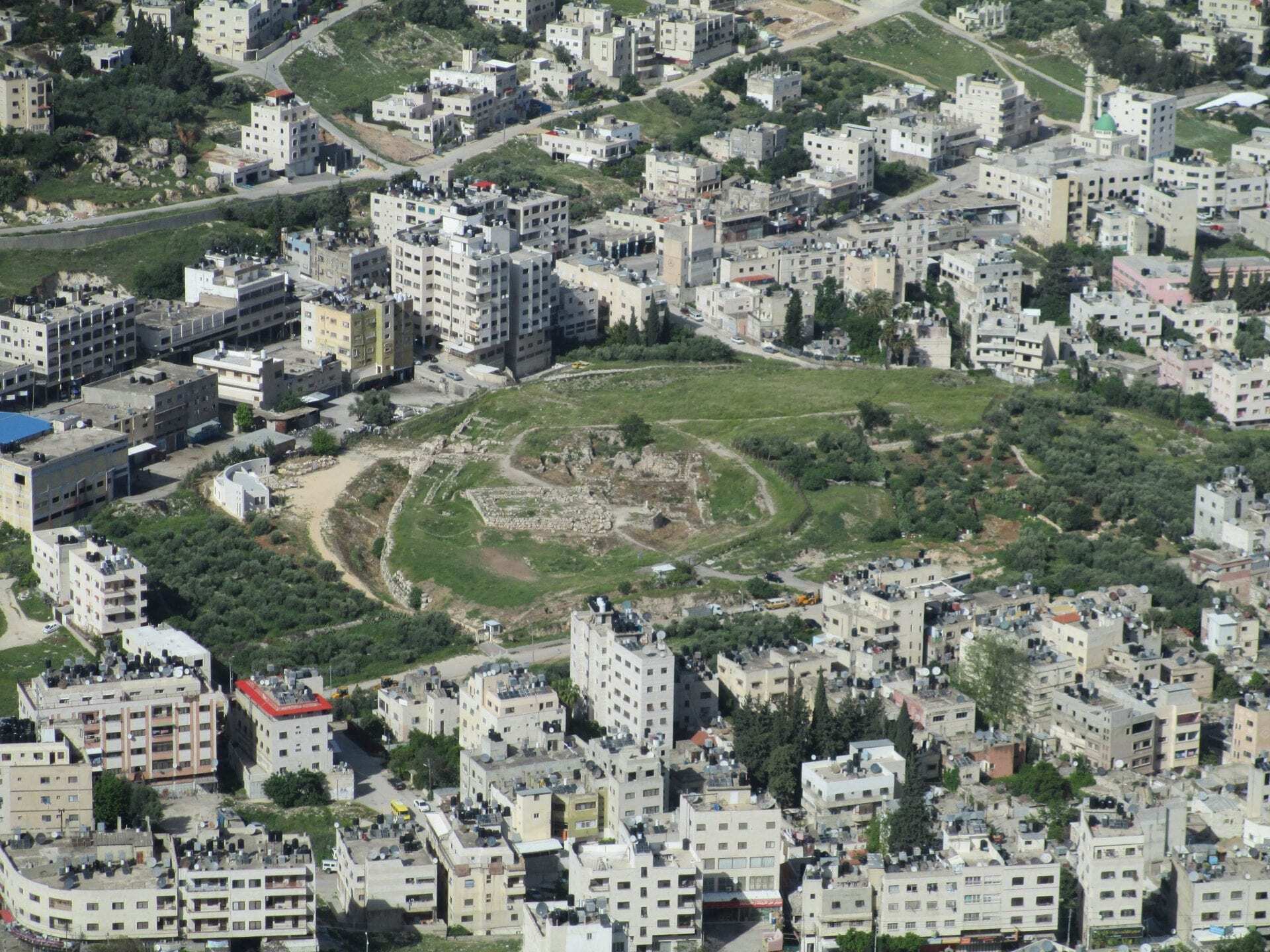Archaeologists excavate the ancient Canaanite/Israelite of Tell Belata, in the West Bank of Palestine in Nablus.
Experts estimate that the towers and buildings at the site date back 5,000 years to the Chalcolithic and Bronze Ages.
Traditionally, the site has been associated with biblical Samaritan city of Shechem said by Josephus to have been destroyed by John Hyrcanus I, based on circumstantial evidence such as its location and preliminary evidence of habitation during the late Bronze and early Iron Ages.
Tell Balata lies in a mountain pass between Mount Gerizim and Mount Ebal, a location fits well with the geographical description provided for Shechem in the Bible. No inscriptional evidence to support this conclusion has been found in situ, and other sites have also been identified as the possible site of biblical Shechem; for example, Y. Magen places locates that city nearby, on Mount Gerizim at a site covering an area of 30 hectares.
The site was first excavated by a German team led by Ernst Sellin from 1913 to 1914. After the end of World War I, work by Sellin was resumed in 1926 and lasted until 1934 with the last few seasons led by G. Welter.
Excavations were also conducted at Tell Balata by the American Schools of Oriental Research, Drew University, and the McCormick Theological Seminary in 8 seasons between 1956 and 1964 when the West Bank was under the rule of Jordan.
One of the oldest coins discovered in Palestine was an electrum Greek Macedonian coin, dated to circa 500 BC, found at Tell Balata. There is evidence that the site was inhabited in the Hellenistic period until the end of the 2nd century BC. This Hellenistic era city was founded in the late 4th century BC and extended over an area of 6 hectares. The built structure shows evidence of considerable damage dated to the 190s BC, and attributed to Antiochus III’s conquest of Palestine. Habitation continued until the final destruction of the city at this site in the late 2nd century BC.
Today’s excavations by Leiden University are in collaboration with the Palestinian Department of Antiquities, which was re-established 15 years ago. Hamdan Taha, director General of the Palestinian Department of Antiquities was quoted saying:
“Establishing a department of archaeology was an important event. It can be viewed as a revival of the Palestinian Department of Antiquities (which) ceased to exist in 1948. At the same time it gives Palestinians the opportunity to participate in writing or rewriting the history of Palestine from its primary sources. The aim of the excavation is to understand the site better, as it features evidence of human structures since 5,000 years.”
The site itself has unfortunately remained neglected and used by the local population as a garbage dump. The excavations today are aimed at enlightening the general public and to take pride in the history and wealth of antiquities associated with it.
Header Image Credit :





